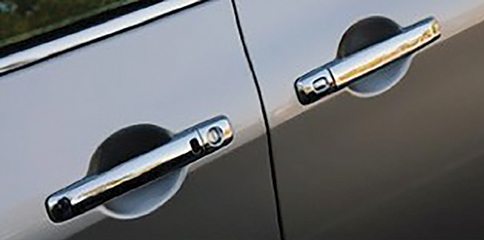Prototyping with 3D Scanning and Printing
Manga International’s Magna Closures leads the automotive industry in supplying car parts such as door modules, window systems, power closure systems, latching systems, handle assemblies, lighting systems, engineering glass and sealing systems. “One of the greatest challenges faced by our product development team is that our products need to be tightly integrated into our customers’ vehicles,” said Dominic DiBlasio, prototype manager for vehicle integration at Magna Closures. In many cases, Magna Closures designers had to prepare a proposal without computer-aided design (CAD) files containing the vehicle’s complex contours.
“The reduction in the time and cost of proposing new designs has enabled us to increase the number of product development projects by a factor of five without increasing our staff. We can respond more quickly to customer requests, which increases the odds of getting the order.” -Dominic DiBlasio, Magna Closures
Simpler & Faster
Traditionally, designers and engineers would take manual measurements of vehicles and use that CAD data towards the design of a new product. This process usually involved a CNC machine that would take two weeks to produce a prototype. The initial prototype almost never fit, so designers had to measure the gaps and interferences between the prototype and the vehicle, adjust the CAD model, change the design and build a new prototype. Then it would take another 3-6 iteration to achieve the proper design. The complete process to build a prototype ready for customer presentation took about 12 weeks and cost an average of $30,000, not including machining the final prototype and integrating it into the vehicle.
Once Magna Closures adopted FDM 3D printing, they were able to build all their prototypes in-house and within a day. This enabled designers to integrate the new product with the vehicle much more accurately, often obtaining a perfect fit on their first attempt. But using the service bureau for scanning meant the designers had to generate a purchase order, and it took the service center about a week to scan the vehicle. This approach still cut the development time to six weeks and the cost to $10,000, not including machining and integrating the final prototype.
| Method | Time | Cost |
| Iterative design process | 12 weeks | $30,000 |
| In-house 3D printer, scanning service bureau | 6 weeks | $10,000 |
| In-house 3D printer and scanner | 2 weeks | $2,000 |
| Savings vs trial and error | 10 weeks (83%) | $28,000 (93%) |
